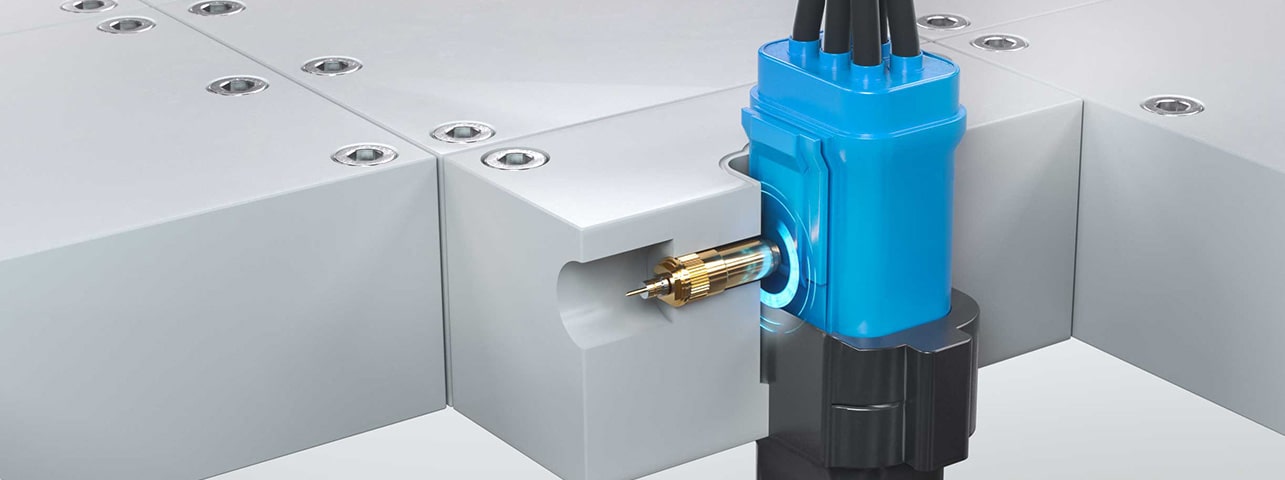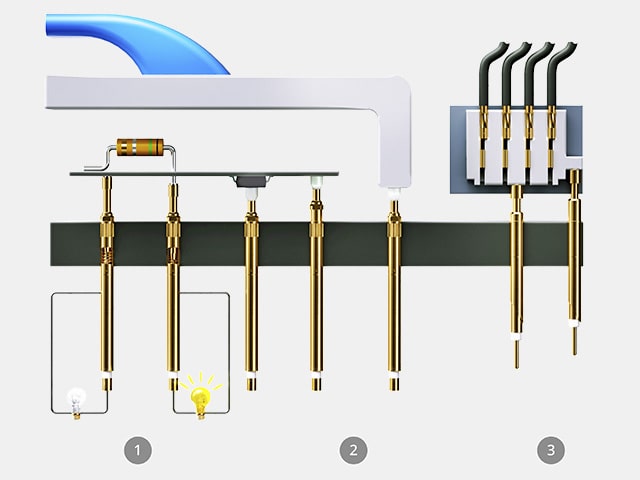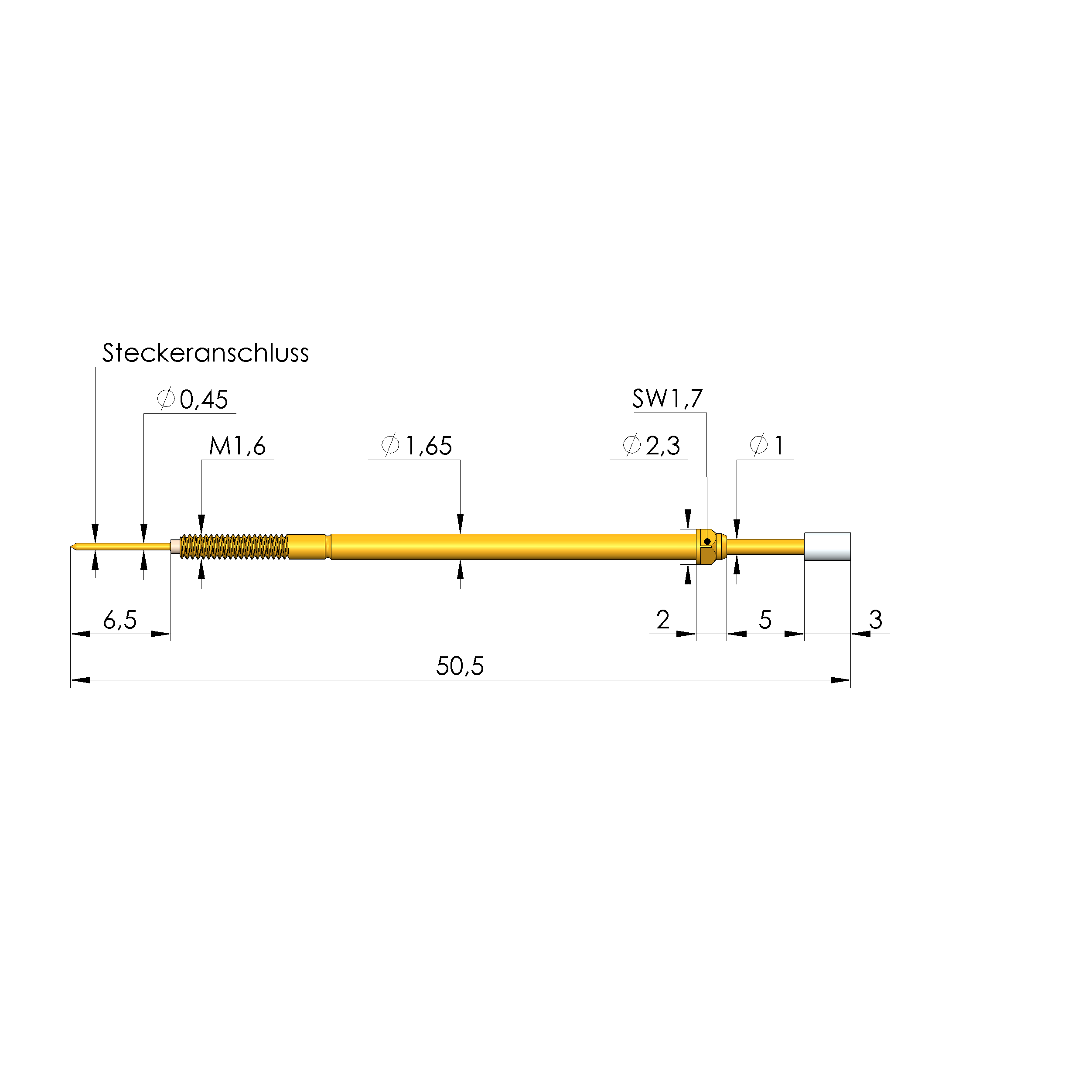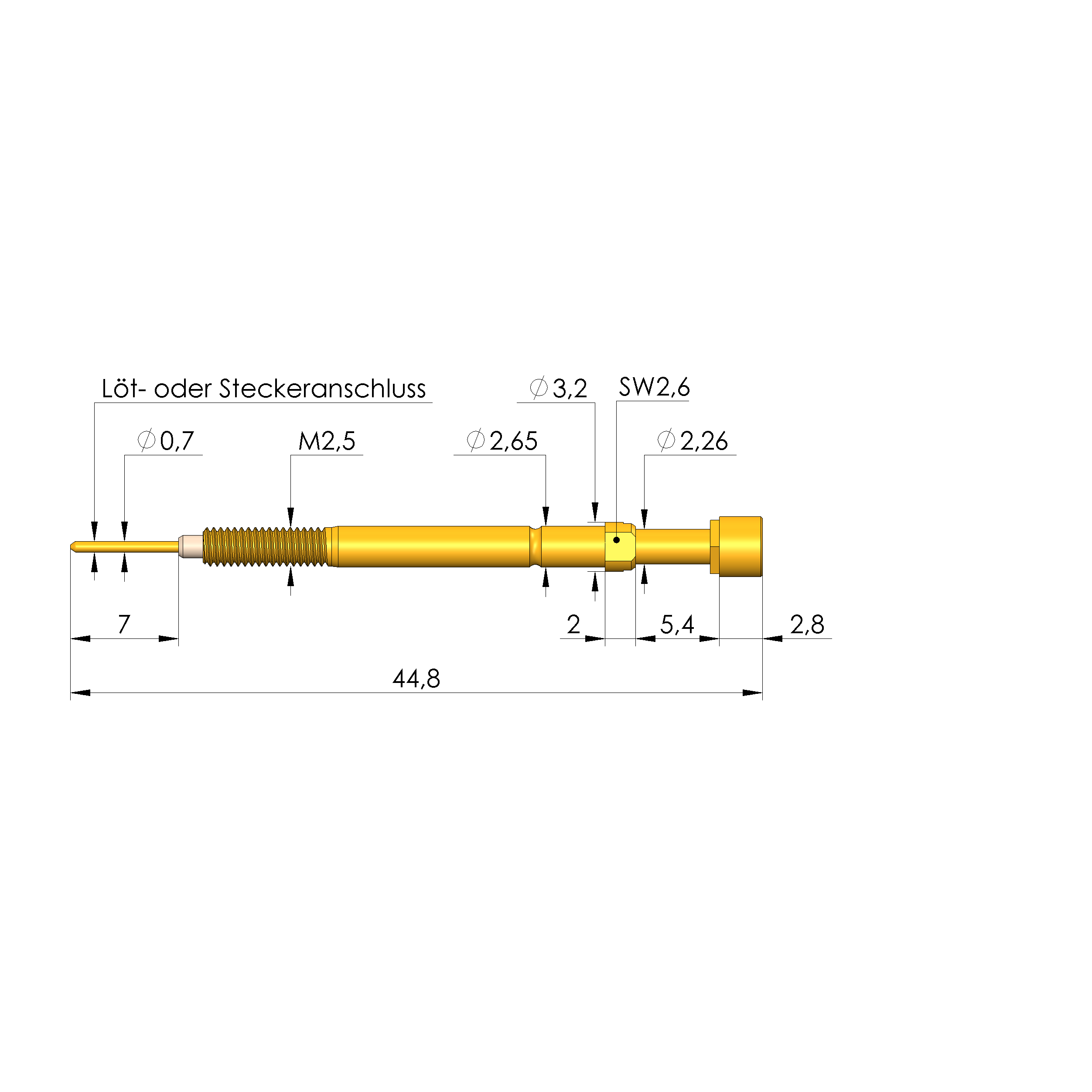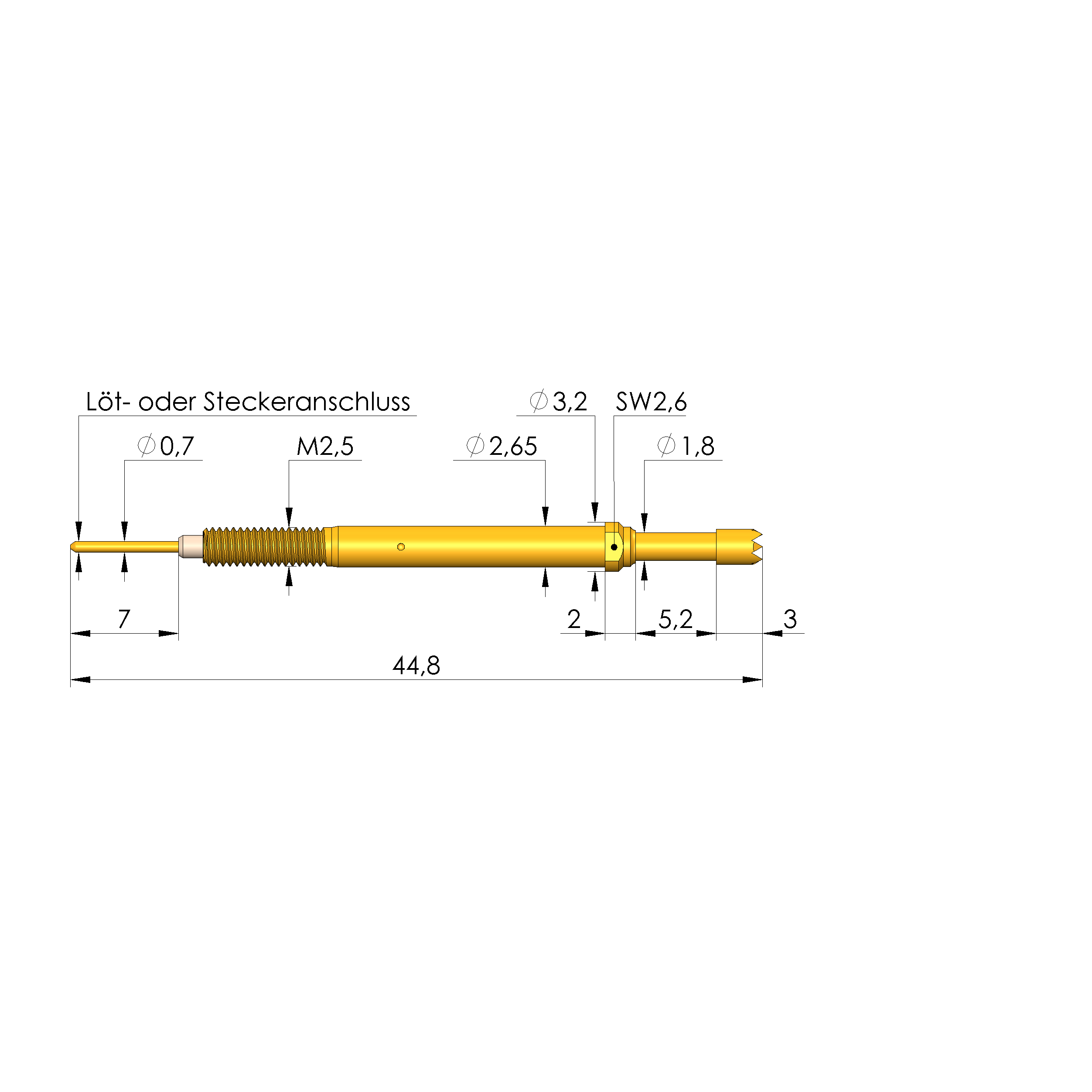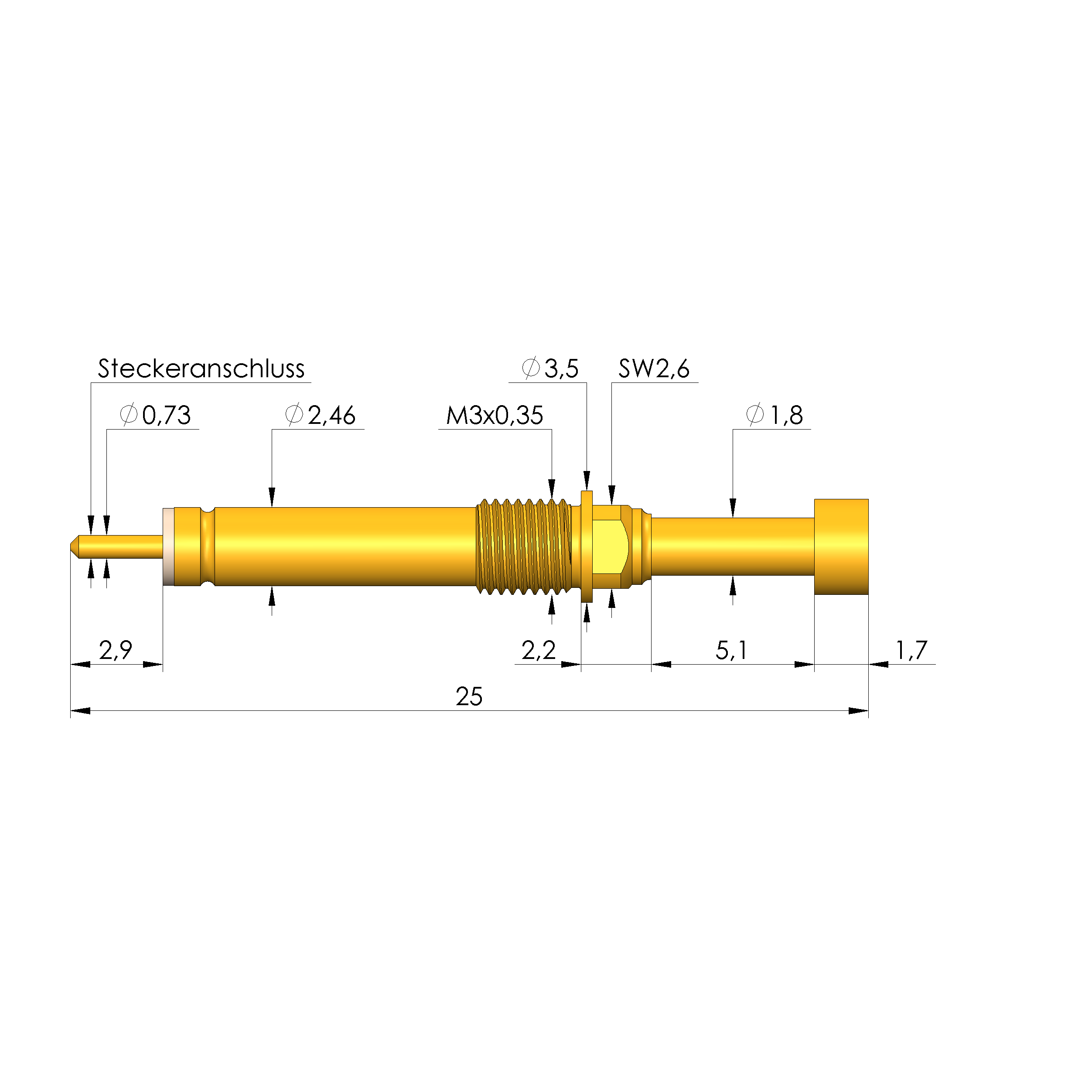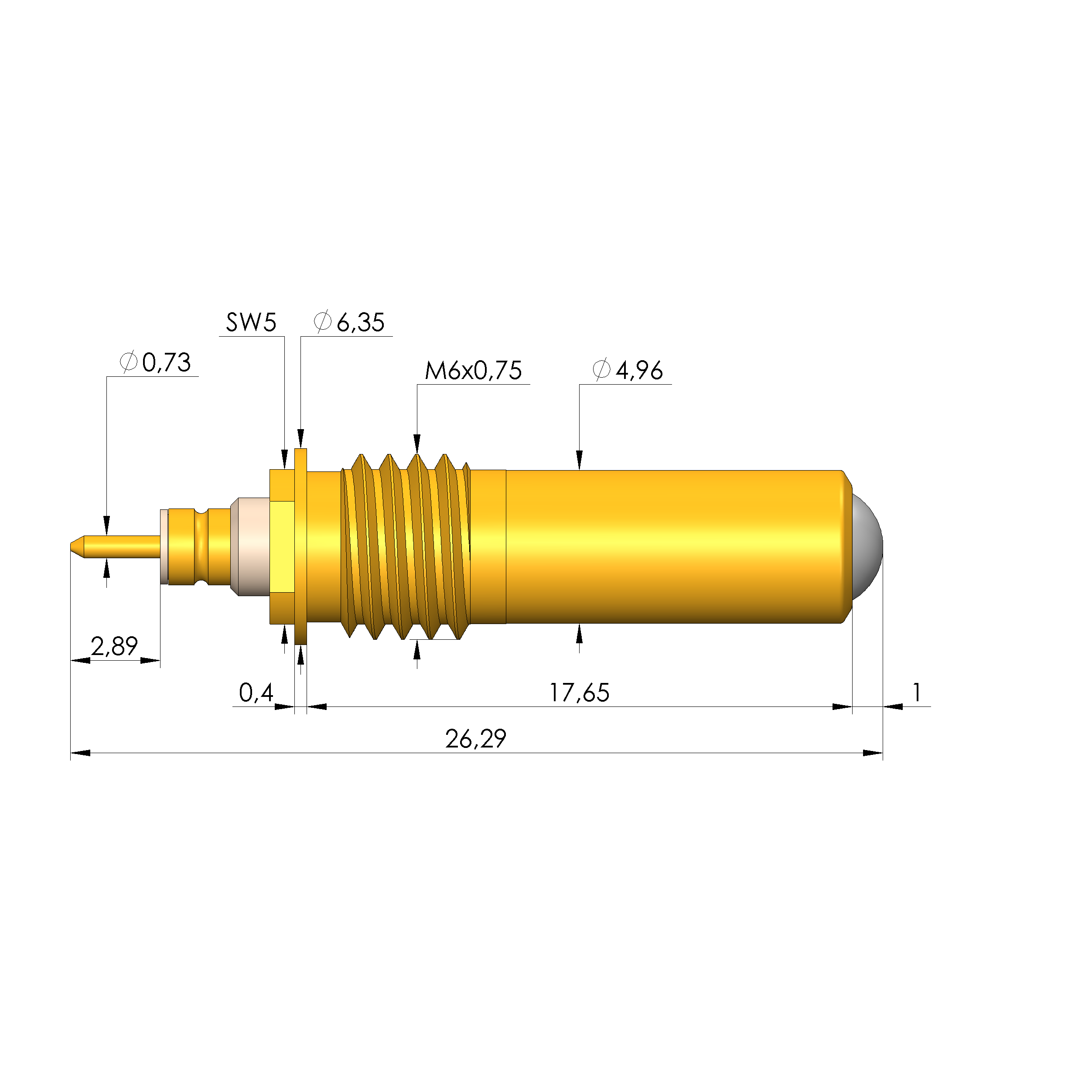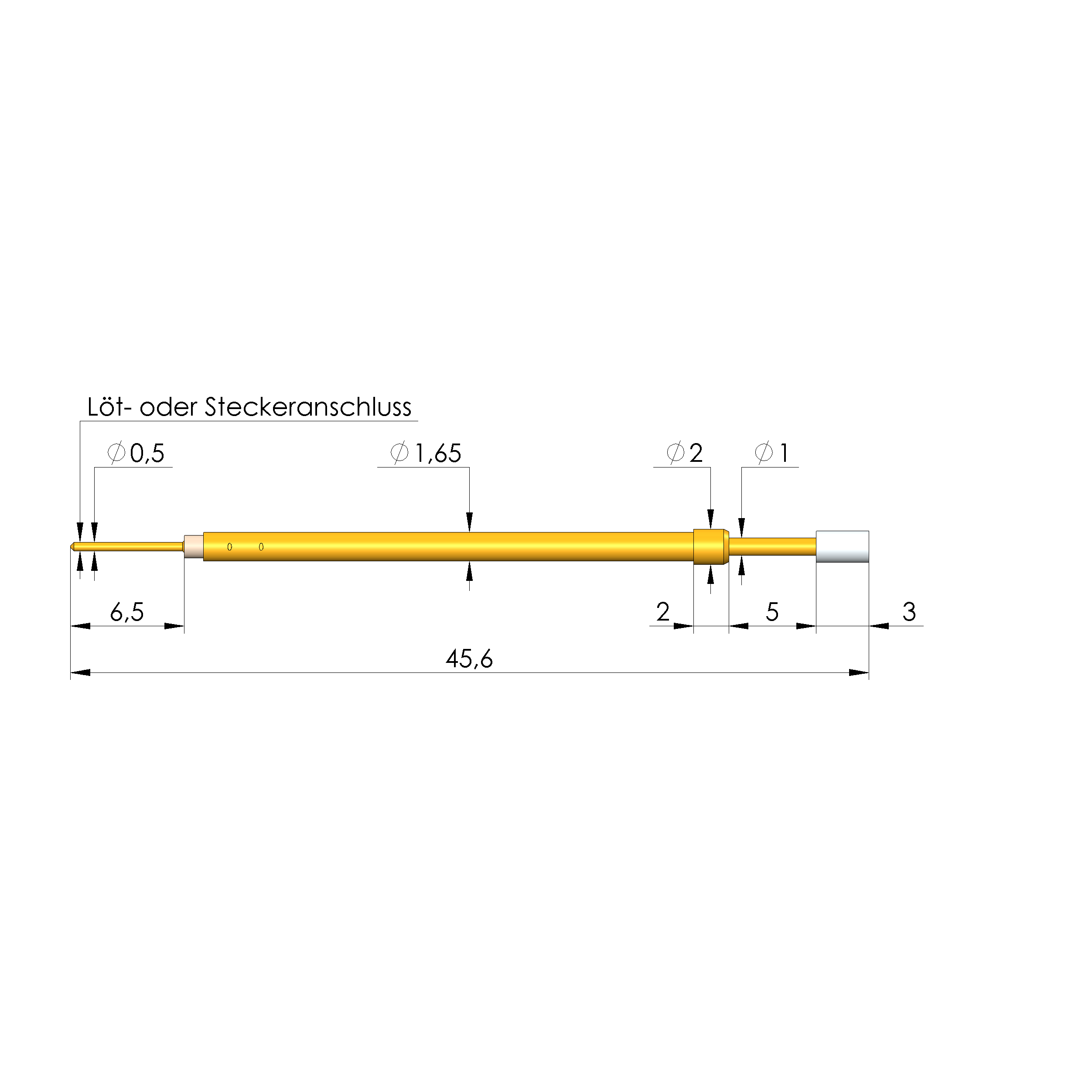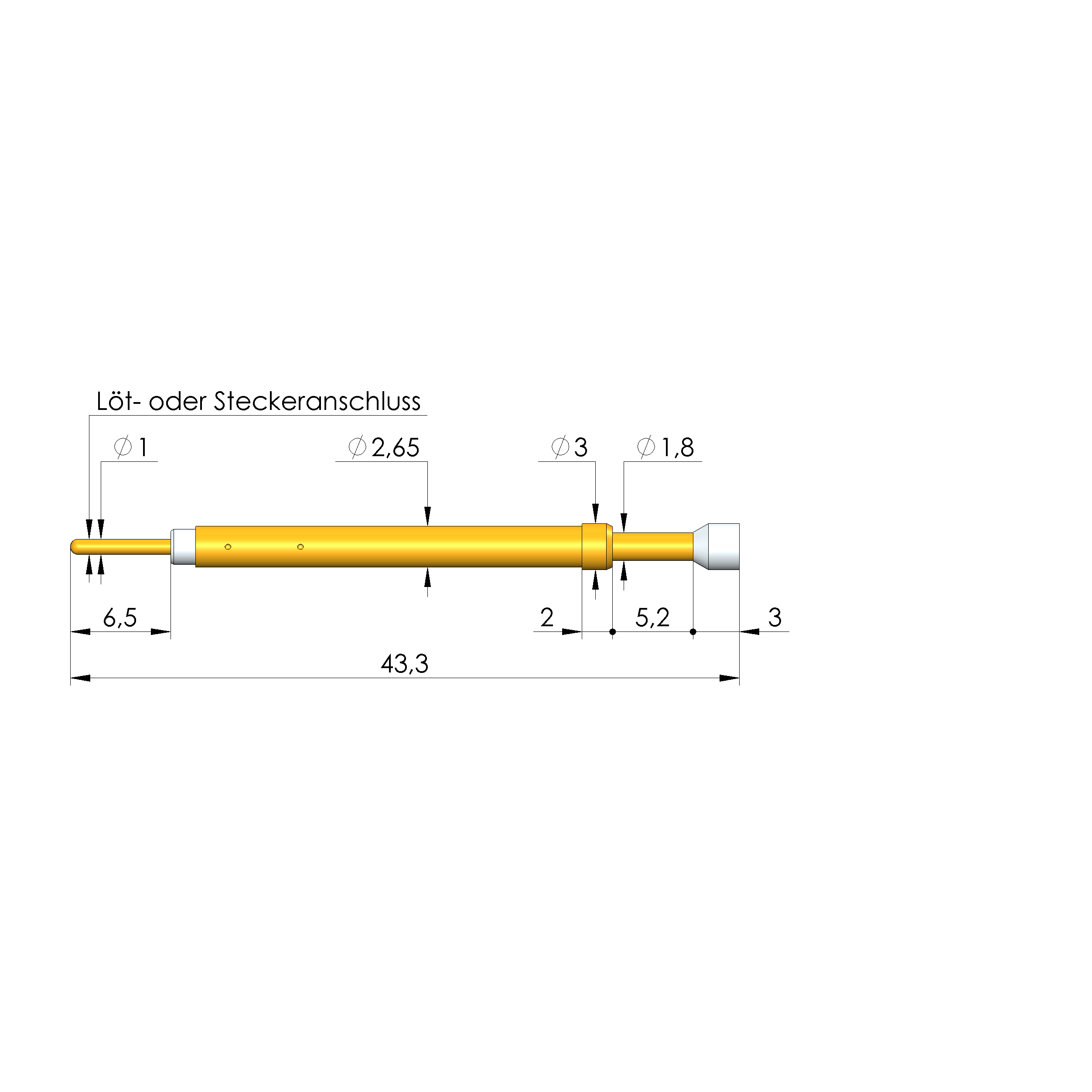Switching probes (SKS) are suitable for many various applications: not only can they be used for component detection tests and switches for closed/open checks, but also as a signal trigger for process control.
Furthermore, in combination with other test probes (e.g., push-back probes), position determination of contact terminals in plug housings is possible. In most cases, INGUN switching probes are so-called “closers”, and are normally opened (NO).
That means that the electric circuit is closed when the plunger is activated, allowing the plunger to be pushed further beyond the switching point. The rated current applied can only be transmitted in the closed state.
Reliable switching with all versions
Press-in and screw-in versions are available, depending on installation requirements. These are also available as quick-exchange systems in most series. Screw-in versions are especially suitable for applications with vibrations or unwanted side forces or axial forces. This prevents the test probe moving out of the receptacle.
A large number of different switching probes (SKS) are available to meet the respective test requirements:
Wide range from
design to tip style
In most series, these probes act as a closer and are normally open (NO). However, there are also openers, which are opened when the switching circuit is activated. These switches are normally closed (NC). The switching probes (SKS) vary in terms of the following features: dimensions (grid size and length), switch path, working stroke, installation method (press-in or screw-in), and available tip styles. With insulating plastic tip styles, voltage-free checks can be performed on components (here the signal is not sent through to the connection).
To regulate the installation height, various receptacle collar heights are available. Similarly, screw-in versions vary the installation height by means of a thread and allow the position of the switch point to be precisely set. The switching probes are held in place by the crimp points on the receptacle.
Installation options plus quick-exchange systems
Switching probes are installed either by pressing or screwing them into the receptacle, for which both standard receptacles and quick-exchange systems are available. The latter enables the switching probes to be changed quickly without new wiring. This results in reduced maintenance and less down time, and thus the costs associated with those. The wiring is done by the test equipment manufacturer only, preventing wiring errors during maintenance.
The quick-exchange receptacles are also available with a knurl to ensure they are held securely in the mounting hole over time. For the electrical connection, a cable is always soldered onto the receptacle. The second cable is either soldered directly onto the inner conductor, connected using a plug, or the quick-exchange receptacle.
